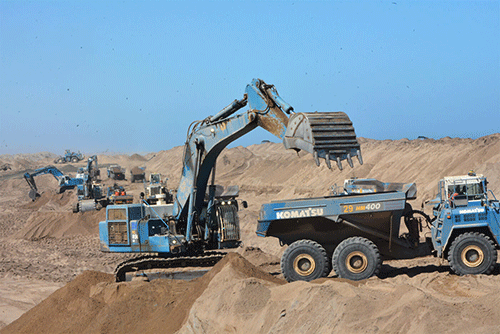Diamond processing and exports, increased consumption in wholesale and retail trade and tourism are anticipated to be the main driving forces behind Namibia’s continued economic recovery. The latest forecasts indicate the domestic economy is expected to grow by 3.5% this year.
The African Development Bank (AfDB), in its latest Country Focus Report for 2023, said Namibia owes much of its sustained economic resilience to continued political stability, sound macro-economic management and good governance.
The continental multilateral bank benchmarked the projected 2023 economic growth against the country’s real GDP, which contracted by 8.1% in 2020 but recovered by 3.5% in 2021, and further by 4.6% in 2022, following the lifting of Covid-19 pandemic-related restrictions.
“Economic growth is gradually recovering but there are strong pressures on domestic inflation as well as the fiscal and external balances that will require the implementation of sustained macroeconomic and social policies to reduce the risk of debt distress, protect vulnerable groups and support growth,” the bank highlighted.
It further pointed out there are downside risks to the projected growth, which includes a high import bill and lower Southern Africa Customs Union (SACU) revenues for Namibia. Being Namibia’s largest market for its external trade, the bank noted South Africa’s slowed economic growth affected SACU revenues for most member countries, as the country struggles with higher global commodity prices emanating from global supply-chain disruptions, rising global inflation and subsequent hikes in international interest rates.
Fiscal developments
While future economic projections look bright for Namibia, AfDB underscored the country’s low SACU receipts remain a concern and played a major role when Namibia’s total revenues declined to 30% from 33% of GDP during the 2020/21 financial period.
During the same period (2020/21), total expenditure fell at a slower rate to 37% from 41% of GDP but remained elevated with expenditure pressures to cushion real incomes against high inflation.
“Over the same period, the public sector wage bill remained high, and public debt stood at 67% of GDP. The fiscal deficit averaged 7.5% of GDP in 2021/22, primarily financed by domestic securities issuances and multilateral financial institutions. The current account deficit of 9.8% of GDP in 2021 and 8.4% of GDP in 2022 deteriorated from a 2.8% surplus in 2020 following higher fuel import payments, and declining SACU receipts.”
However, the country’s international reserves rose marginally to 5.7 months of imports (December 2022) from 5.6 months (2021) and stood at 5.1 months of imports in March this year.
Poverty and social indicators
The AfDB report raised concerns around the country’s high unemployment rate and rising income inequality. The continental development bank stated that despite the country’s high literacy score of about 0.998, the high unemployment rate continues to undermine government efforts to reduce poverty and income inequality.
“Youth unemployment is compounded by inadequate training, financing and the prevalent skills mismatch. The latest statistics show a headcount poverty rate of 17.4% (2019) and an unemployment rate of 33.4% (2018), with youth unemployment at 46.1% and the female share at 48.5%,” AfDB stated.
The IMF perspective
Meanwhile, the International Monetary Fund (IMF), led by mission chief for Namibia, Jaroslaw Wieczorek, also recently shared in its latest Article IV Consultation on the country. This submission equally advised that the country should maintain key fiscal reforms in order to preserve debt sustainability, cushion against the volatility of SACU revenues, and foster private sector-led growth.
“Assisting the vulnerable takes on new importance in the context of the ongoing drought and the risk of resurgent fuel and food prices. New projects such as green hydrogen, oil and gas exploration, and processing of critical minerals can help diversify the economy if accompanied by reforms to address skill mismatches and reduce the cost of doing business. Proper assessment of fiscal risks is needed before any budgetary commitments to such projects,” reads the IMF article.
It added that: “Efforts to ensure tax compliance should continue. Improving the licensing and the taxation of natural resource extraction, including fishing, will enhancing revenue mobilisation. In parallel, strengthening public financial management, including to improve large public projects selection, also remains a priority. Publishing a fiscal risk statement along with the budget document will enhance fiscal transparency and public debt management. Ensuring fiscal space for social measures will help mitigate the impact of high food prices on the vulnerable.”
– ohembapu@nepc.com.na


